Abstract
The shock wave generated by an explosion (“blast wave”) may cause injury in any or all of the following: (1) direct impact on the tissues of variations in environmental pressure; (2) flying glass and other debris set in motion by it; (3) propulsion of the body. Injuries in the first category affect gas-containing organs (ears, lungs and intestines), and acute death is attributed to air forced into the coronary vessels via damaged pulmonary alveoli. It is estimated that overpressure sufficient to cause lung injury may occur up to five miles from a 20-megaton nuclear explosion. The greatest single hazard from blast is, however, flying glass, and serious wounding from this cause is possible up to 12 miles from an explosion of this magnitude.
Full text
PDF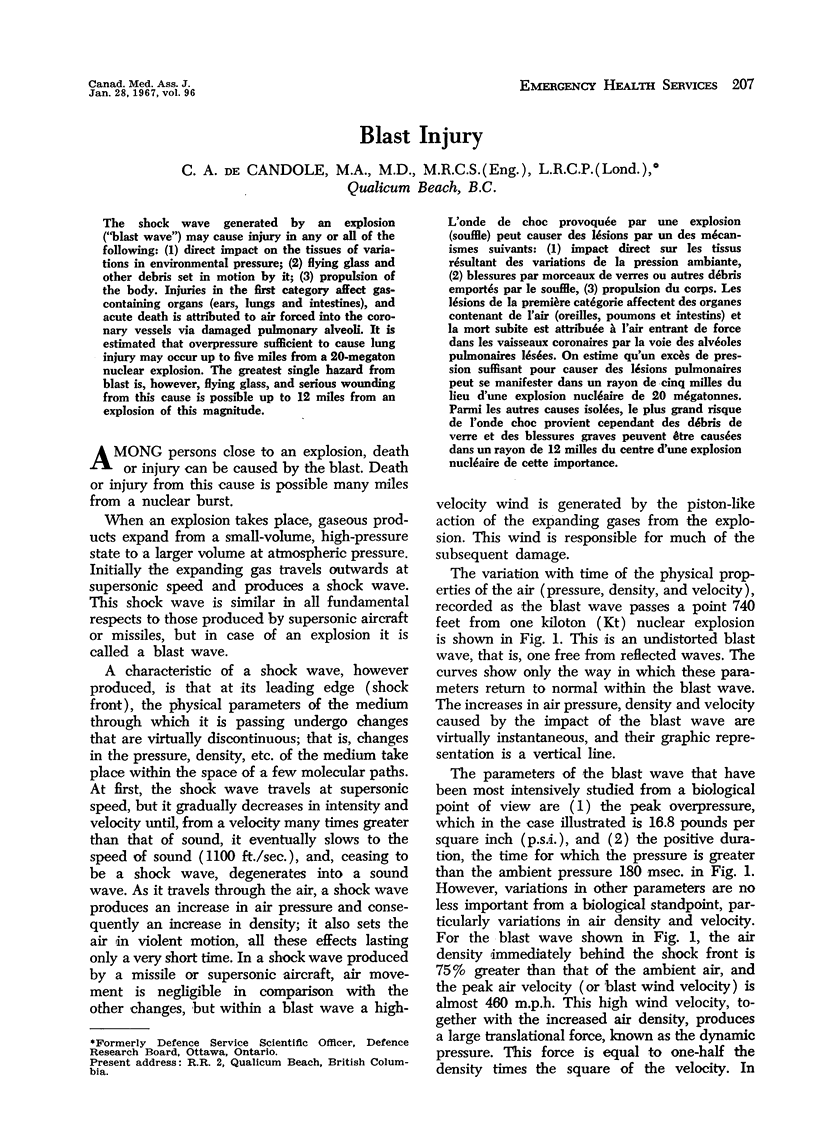
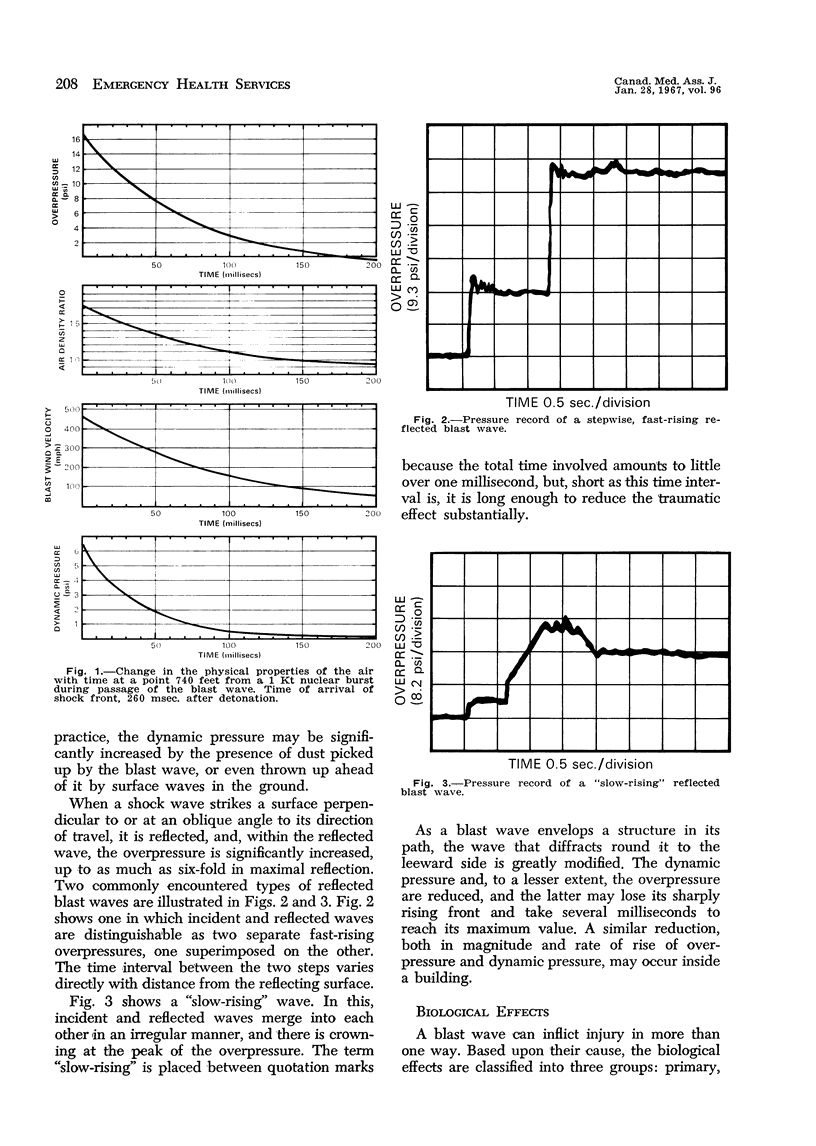
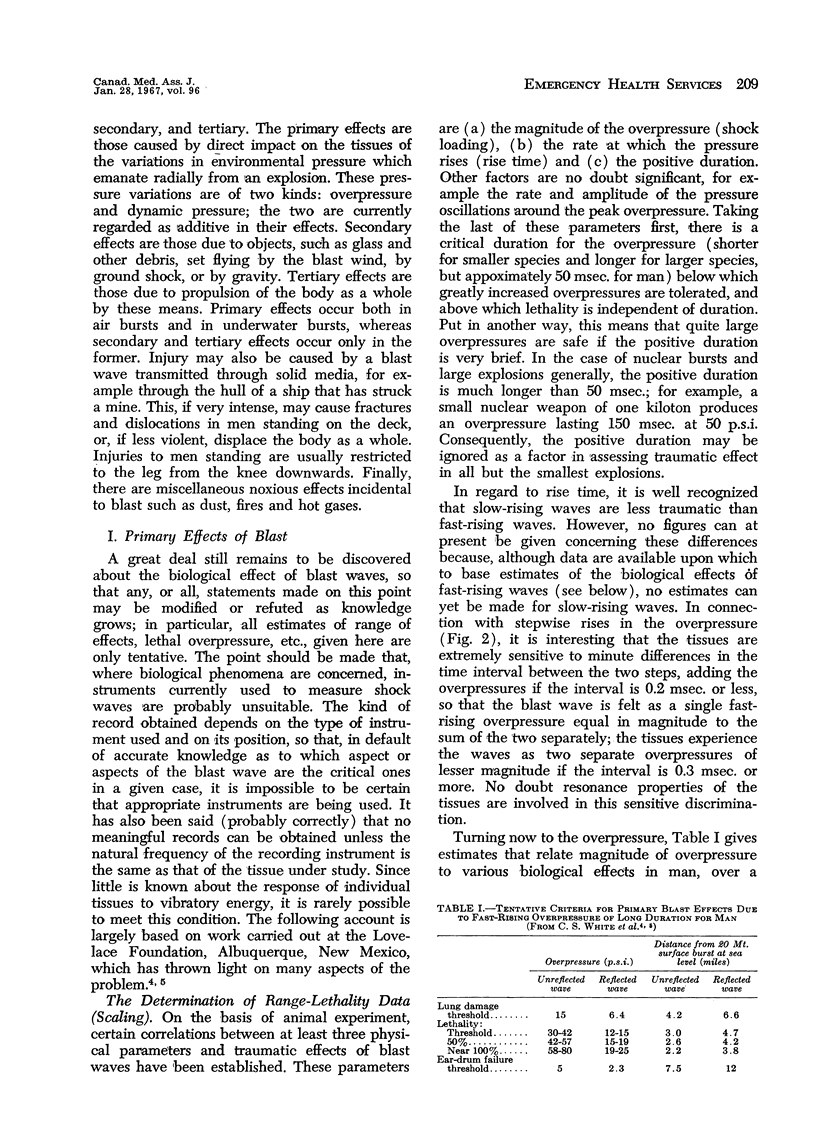
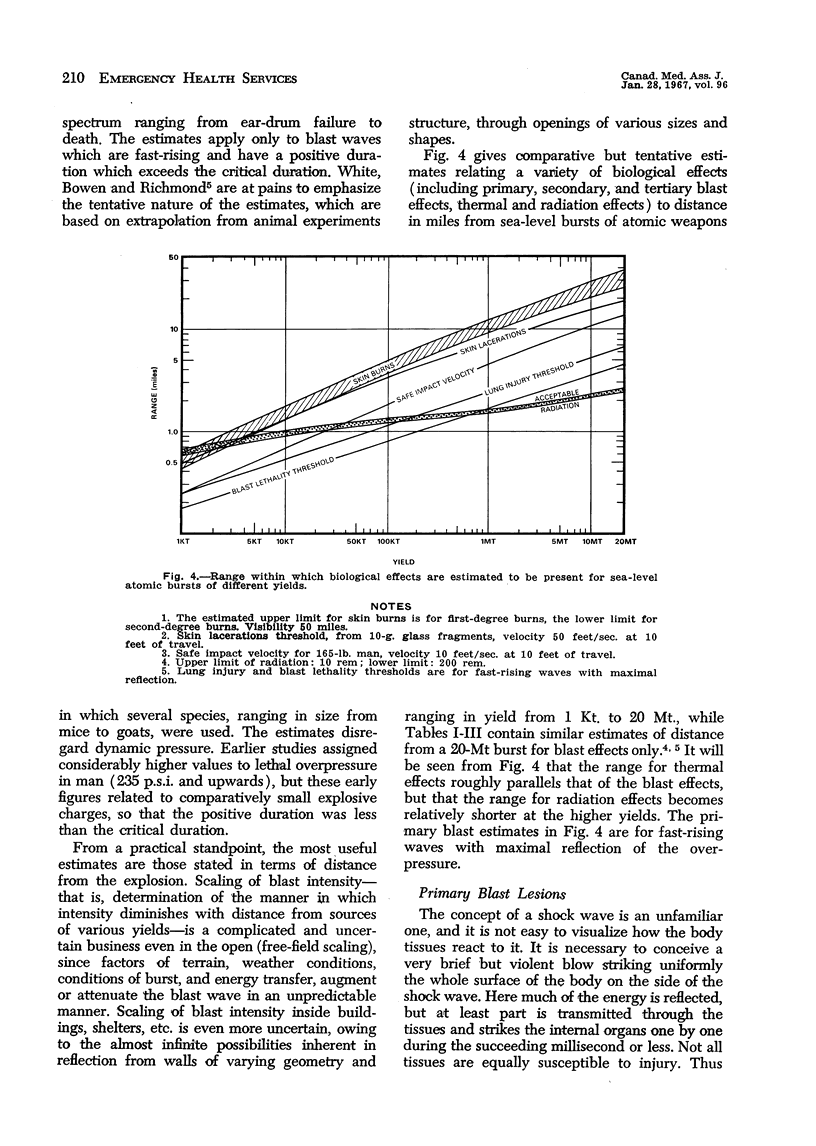
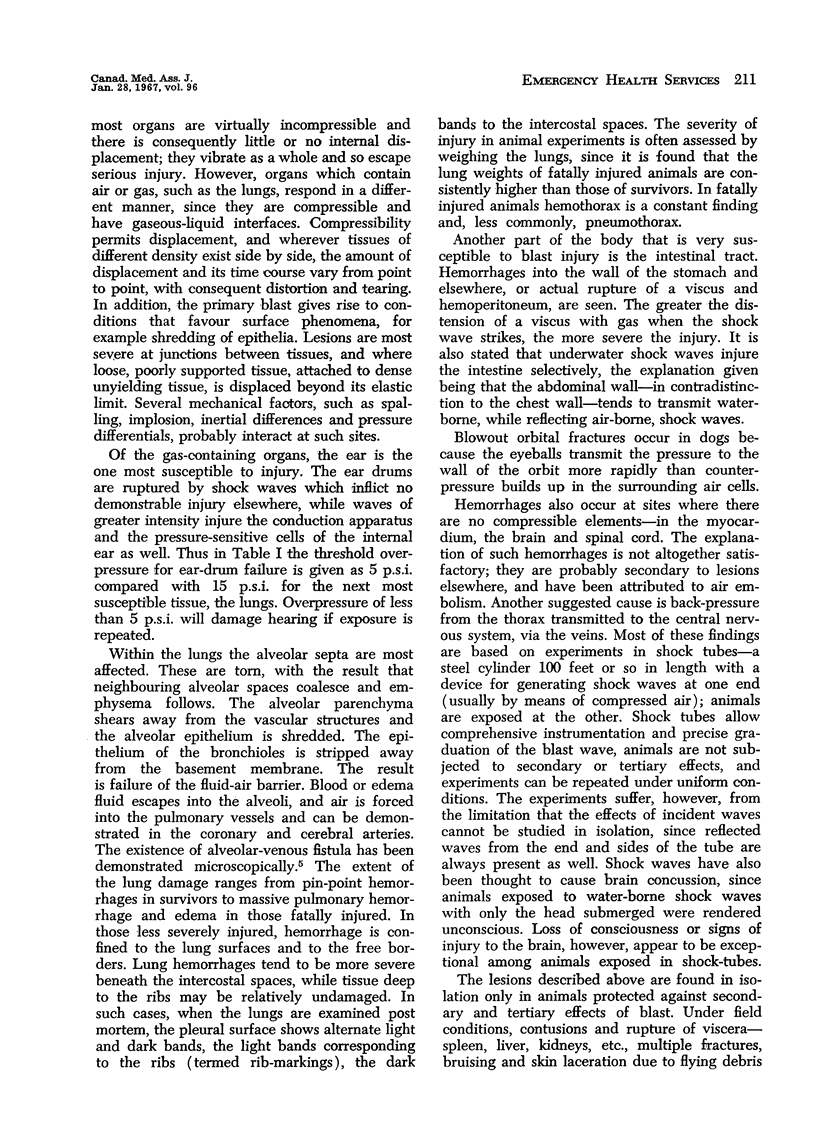
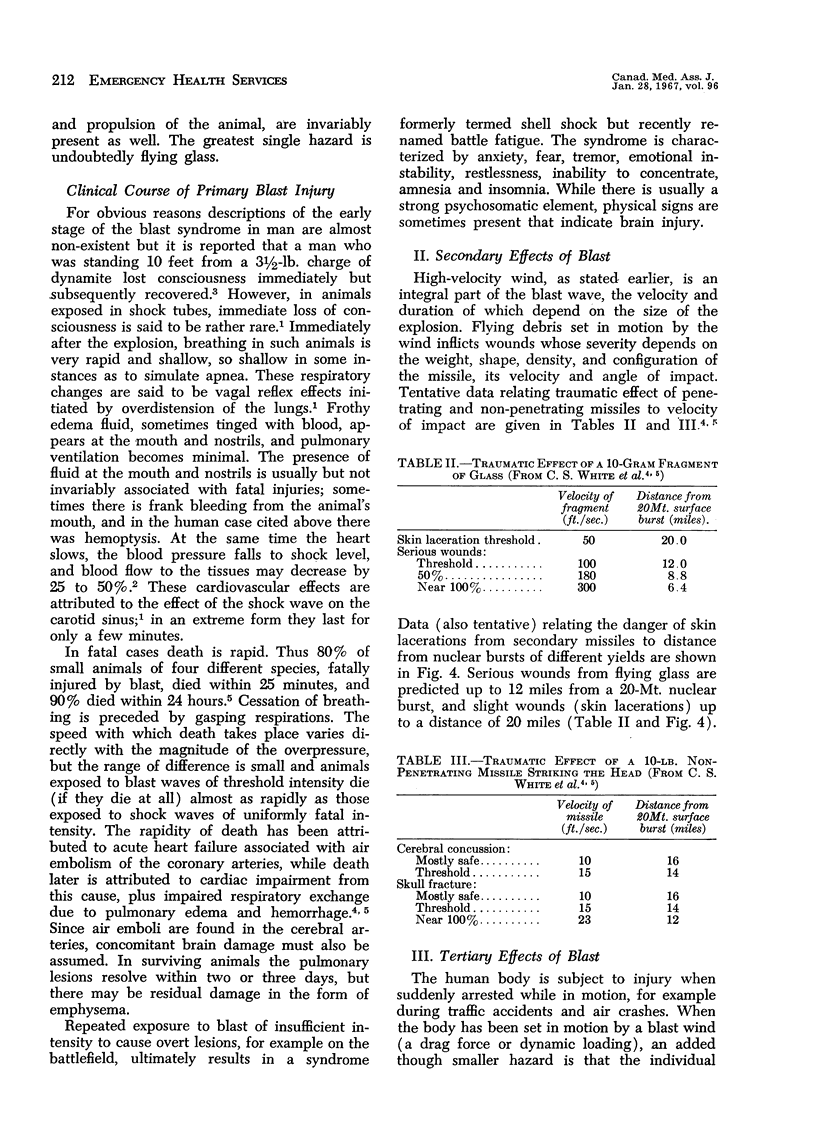
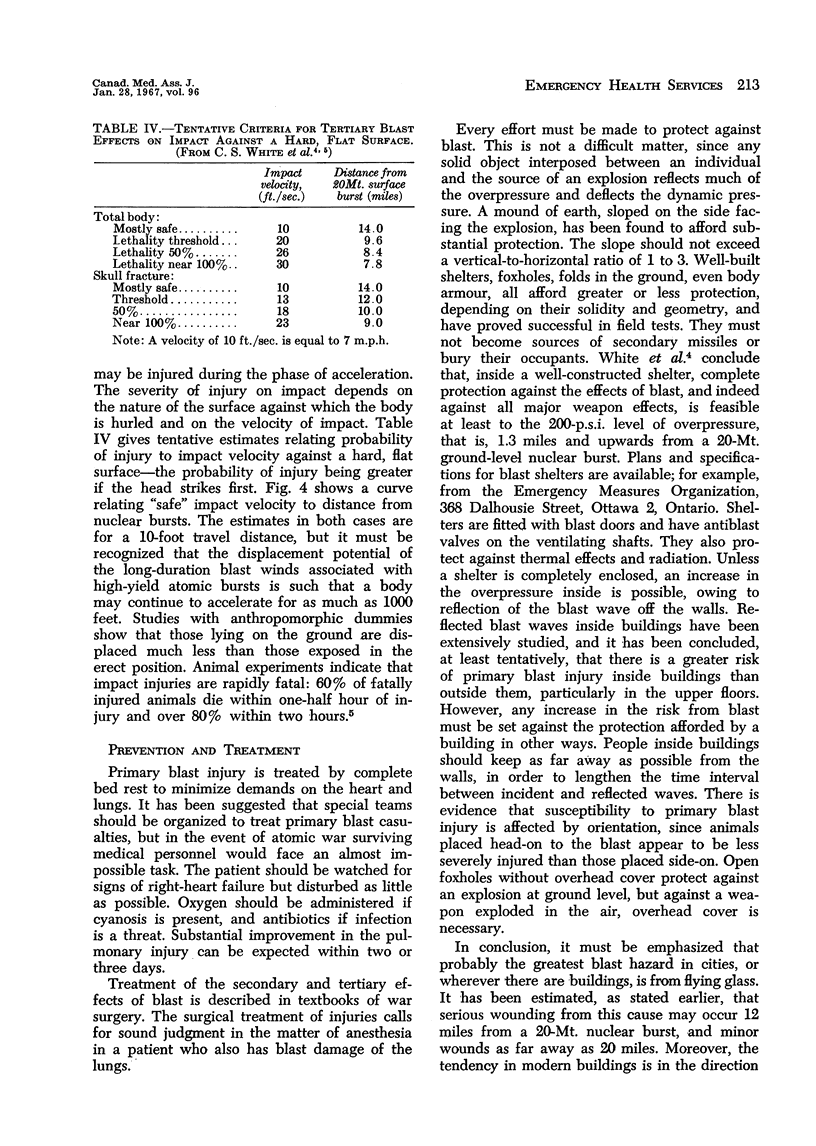
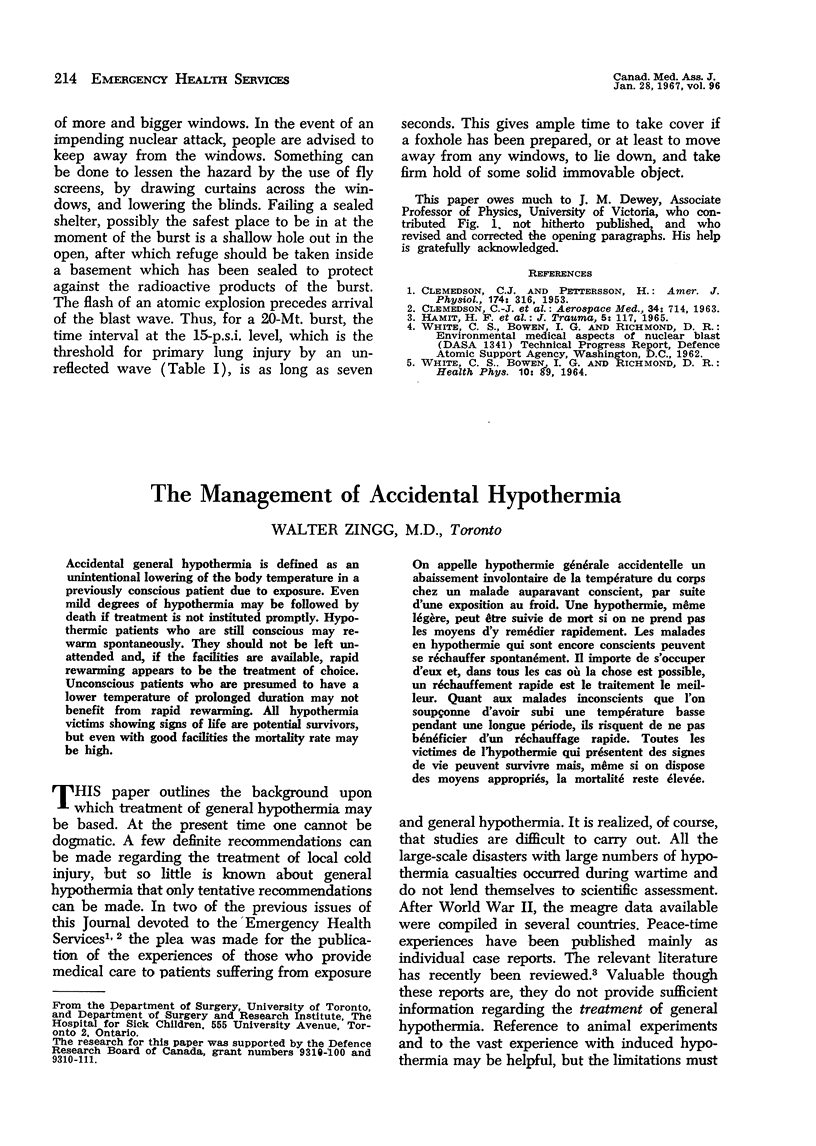
Selected References
These references are in PubMed. This may not be the complete list of references from this article.
- CLEMEDSON C. J., ELSTORP L., PETTERSSON H., SUNDQVIST A. B. THERMOELECTRIC RECORDING OF LOCAL BLOOD FLOW IN BLAST AND EXPLOSIVE DECOMPRESSION INJURIES IN RABBITS. Aerosp Med. 1963 Aug;34:714–719. [PubMed] [Google Scholar]
- CLEMEDSON C. J., PETTERSSON H. Genesis of respiratory and circulatory changes in blast injury. Am J Physiol. 1953 Aug;174(2):316–320. doi: 10.1152/ajplegacy.1953.174.2.316. [DOI] [PubMed] [Google Scholar]
- HAMIT H. F., BULLUCK M. H., FRUMSON G., MONCRIEF J. A. AIR BLAST INJURIES. REPORT OF A CASE. J Trauma. 1965 Jan;5:117–124. doi: 10.1097/00005373-196501000-00012. [DOI] [PubMed] [Google Scholar]


